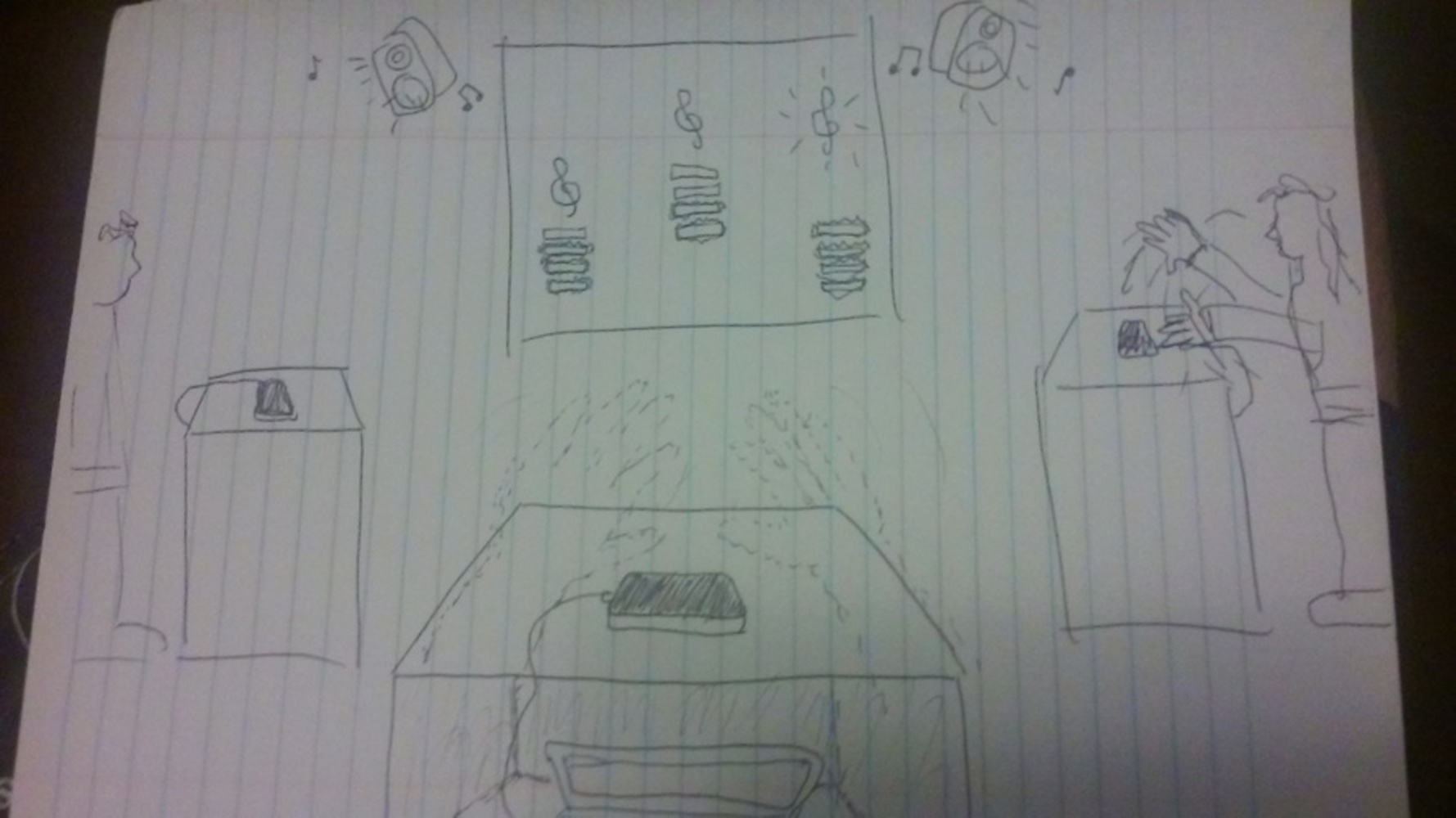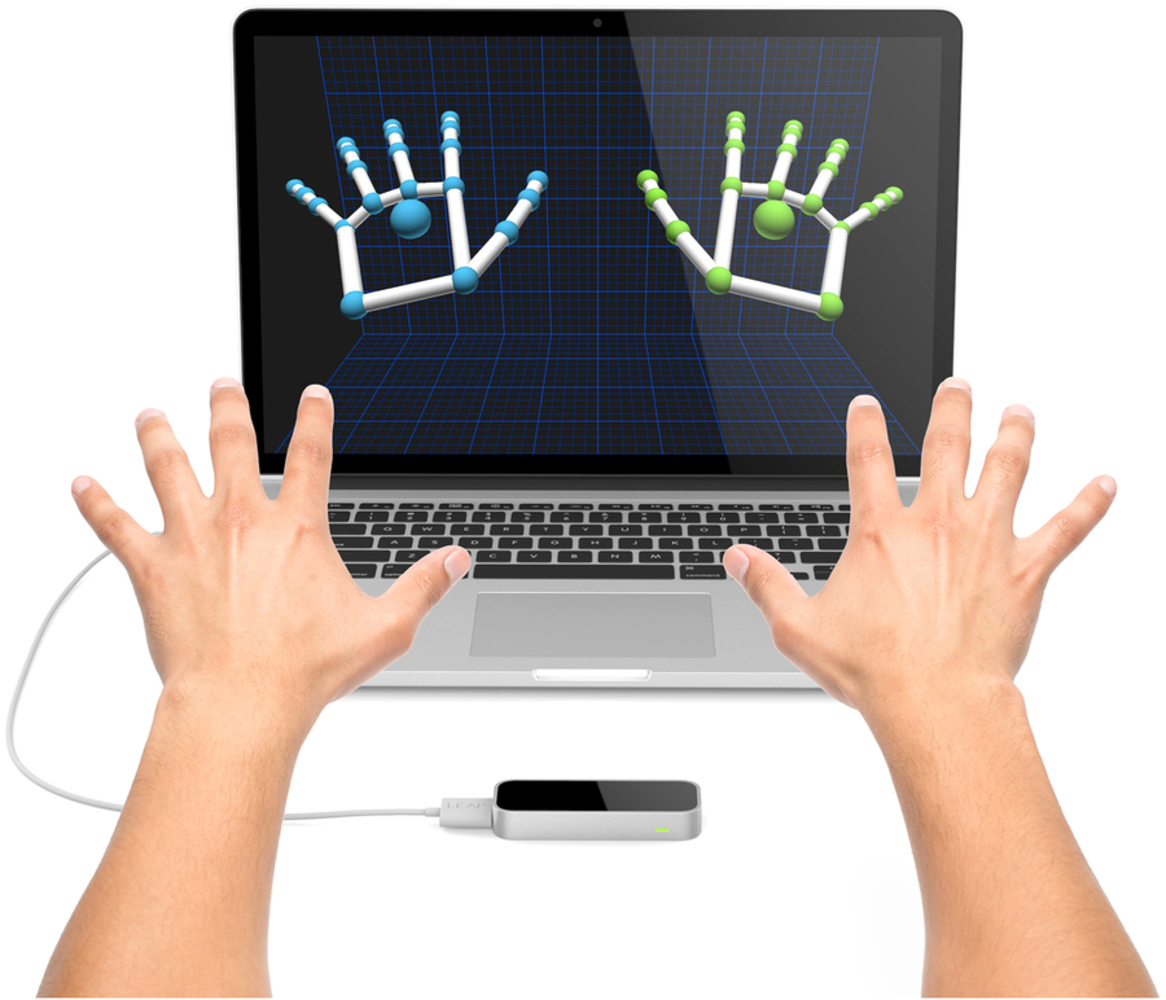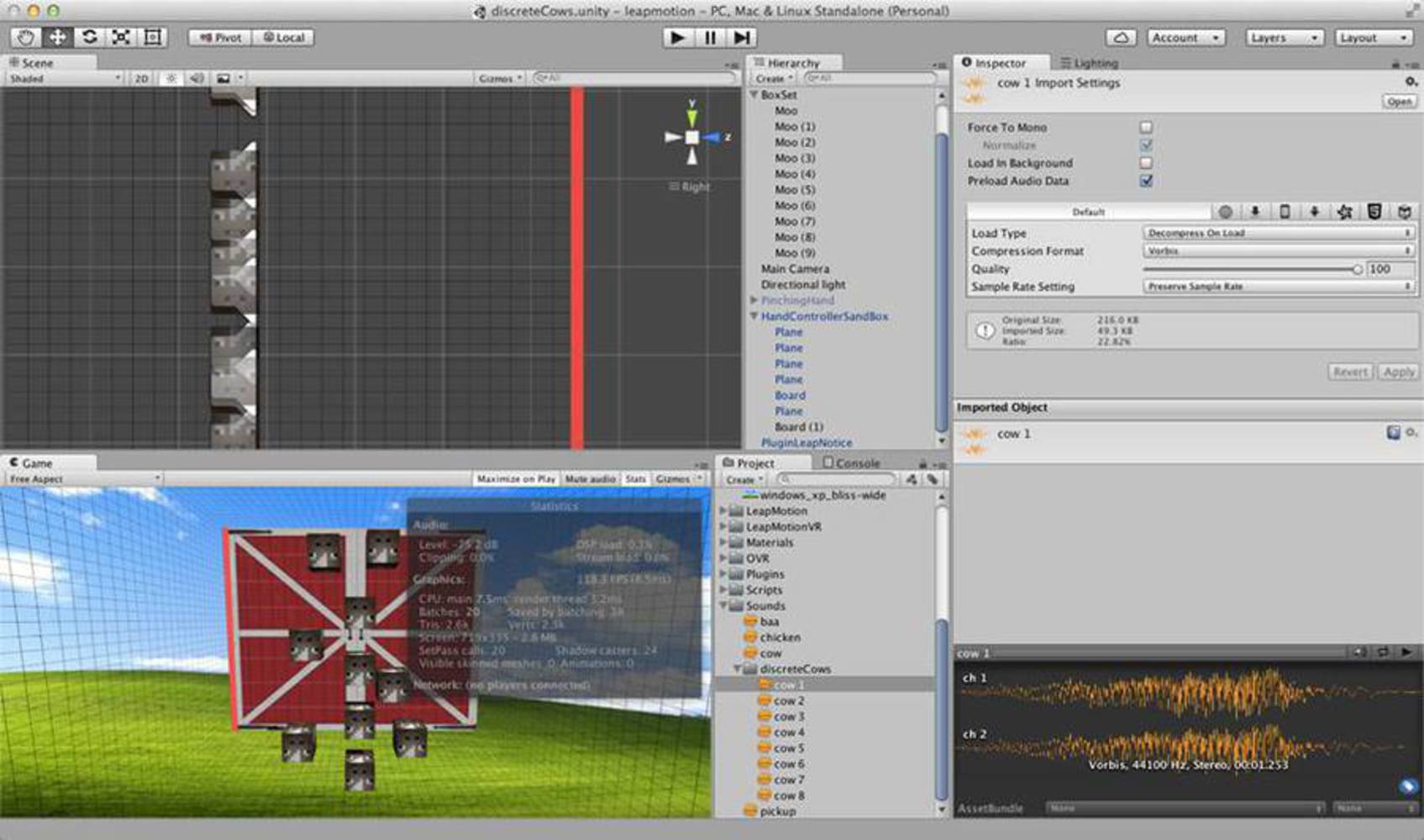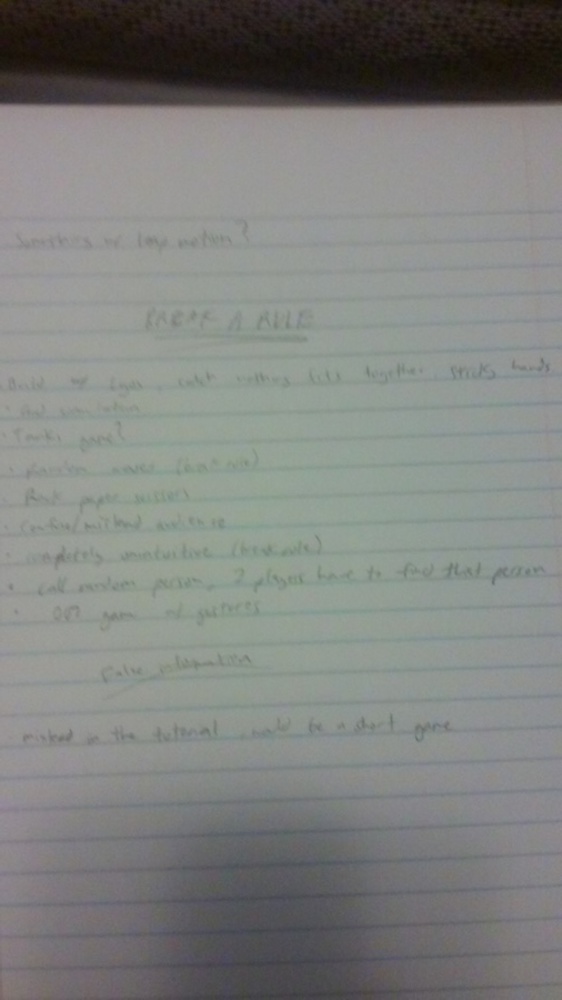Concept
(Video 1)
Our initial idea is to make a playground that allows users to be as creative as they want, so we provide the tools and make it aesthetically pleasing, and they create the cool stuff using our environment. We were really inspired by the 21 Swings project by Daily Tous Les Jours so we thought it'd be a cool idea to somehow use a Leap Motion controller, sounds, and building blocks (much like legos) to allow users to create music. http://www.thisiscolossal.com/2012/09/musical-swings-on-the-streets-of-montreal/
(Video 2)
We also came across this 'musical playground' of sorts which is similar to the swing project but it's individual and more powerful, in that the tones put together form songs that repeat. http://www.madewithmonsterlove.com/portfolio/cadence-synesthesis/
(Video 3)
Another interesting project we've seen was a game where you explore and as you change settings or get near different objects, the sounds change. It can be played here: niion.co.uk/synthphony/ .
(Video 4)
Yet another audio game that changes the sound/score/audio as you move around the world.
Another idea would be to do something similar to tonematrix, where a line sweeps a square grid from left to right and plays the notes associated with the blocks you highlighted when the line sweeps that column. However we'd use leap motion and a cool interactive space in both the physical world and the unity scene. For example, have a box hiding the leap motion controller and get the user to put their hand in the box and explore.









